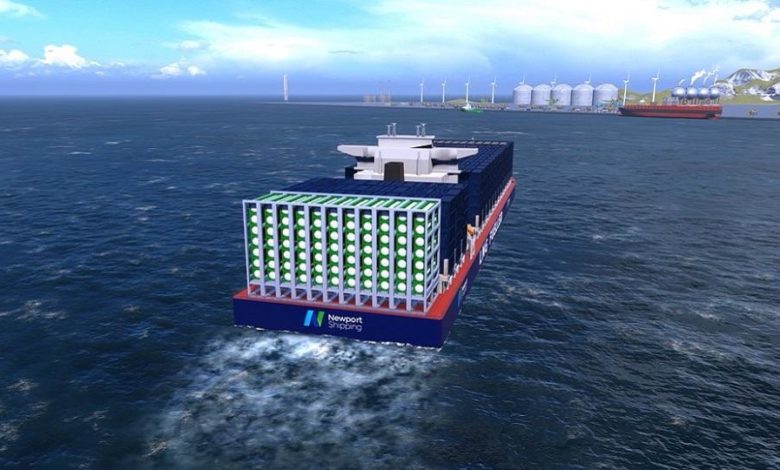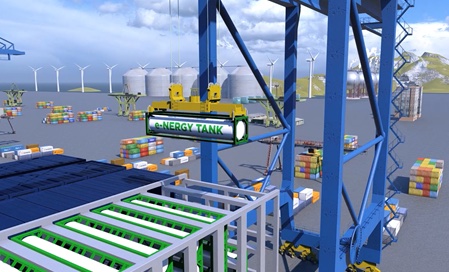Containerised LNG rolls out as alternative to traditional bunkering

Hamburg-based ship engineering and consultancy Marine Service GmbH and London-headquartered repair and retrofit coordinator Newport Shipping have developed a containerised liquefied natural gas (LNG) fuel tank solution for newbuildings and existing container vessels as an alternative to traditional LNG bunkering.
The concept consists of container stowage on free deck in a safe area. The gas handling room is arranged adjacent to the container storage and separated from the containers by a cofferdam and fire protection means, allowing the feeding of low-pressure and high-pressure fuel gas systems for all known 4-stroke and 2-stroke dual-fuel engines, the companies explained.

The LNG fuel tank container has a capacity of 31 gross tonnes and about 33 sq m of LNG. The containers have a fail-safe dry quick coupling connection and are approved for loading in up to 7 layers high stacks. The total number of containers can be optimised according to requirements and can be installed onboard when a ship is in port, the companies said.
Ingmar Loges, managing director, Newport Shipping, commented: “The global shipping industry faces unprecedented challenges as environmental regulations tighten. The shipping industry needs alternatives. The containerized LNG concept provides an answer to these challenges.”
Newport Shipping will offer full retrofit services for Marine Service GmbH’s LNG fuel tank container solutions at its 15 yards that it works in cooperation with. The system has been granted approval in principle (AiP) by the French class society Bureau Veritas (BV).

I think this idea is worth exploring.
This is an amazing development . We are interested in having this on our fleet
good news for the global shipping industry. such news act as a booster to the industry.
Think about the cost and competition before you jump in
The cock-ups of the “initiative” between a “talent” “Marine Service” provider and a “scholar” Box ships’ Operator is obvious:
1) Loss of effective volume of LNG bunkers by more than 30% viz integrated LNG fuel tank
2) High loss of container cargo capacity on deck in relation to necessary LNG fuel capacity stored in independent containerized tanks with extensive supporting structures on deck.
3) Cryogenic containerized LNG tanks exposed on deck to high risk of deck fires and potential explosions from the carriage of DG cargo containers.
4) Supporting fuel tank containerized structure on (aft) deck of seven layers high stack, which is vulnerable to excessive dynamic forces by wave-spectra induced accelerations which have been proven catastrophic with cargo container damages and mass losses at sea that in addition cause loss of ship stability and seakeeping in rough seas.
5) With a single tank capacity of 30 tons of LNG and the restriction of 7 high stacks the design deck space required for the supporting structure, would be proportional to voyage fuel consumption plus a safe margin. This space will be, conjoint with the 7-high stack restriction, restricted by a predetermined in design fuel consumption and voyage duration (!) with potential partly loaded fuel support structure aft and trimming adjustments or necessary extension on deck with design review…
6) The risk of availability at the destination port of ready-loaded “cryogenic tanks” on arrival.
7) Extra paid time at Port for discharging of empty tanks and loading full tanks with unforeseen delays and additional port expenses for the OPEX budget of the Operator.
Shall I need to add in my previous comment further information to the “talents” of the “initiative” on the mechanism of the thermal conductance in potential heat leaks by excessive sunlight heat on the exposed tanks on deck, resulting in boil-off losses in the transfer of the LNG? And the case of “cryogenic tanks” lost at sea turned to floating bombs by BLEVE (“boiling liquid expanding vapor explosion.”)???…